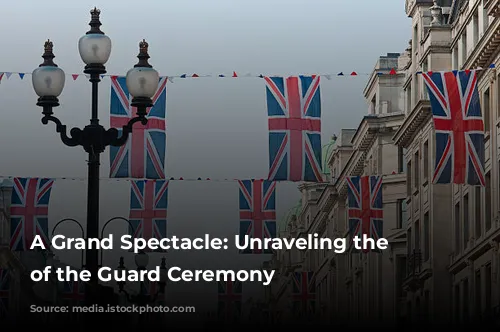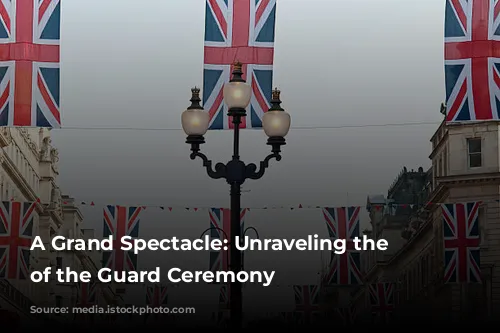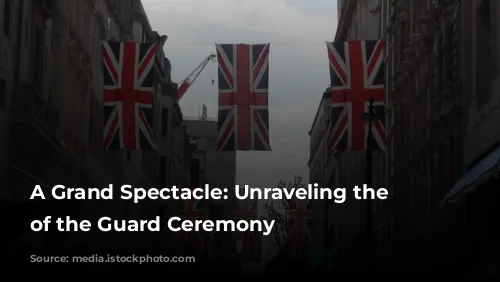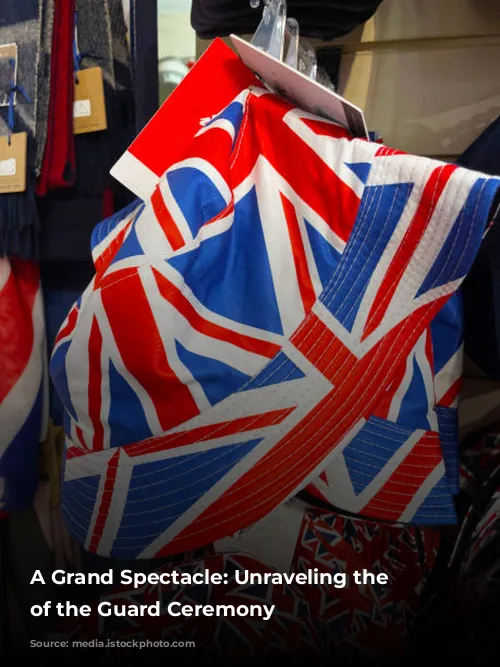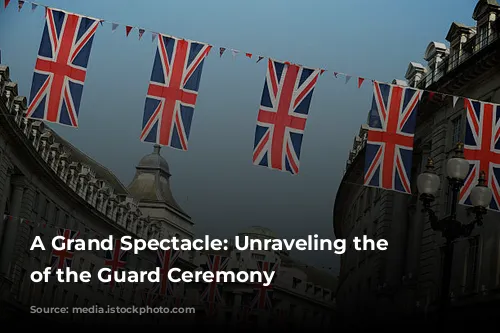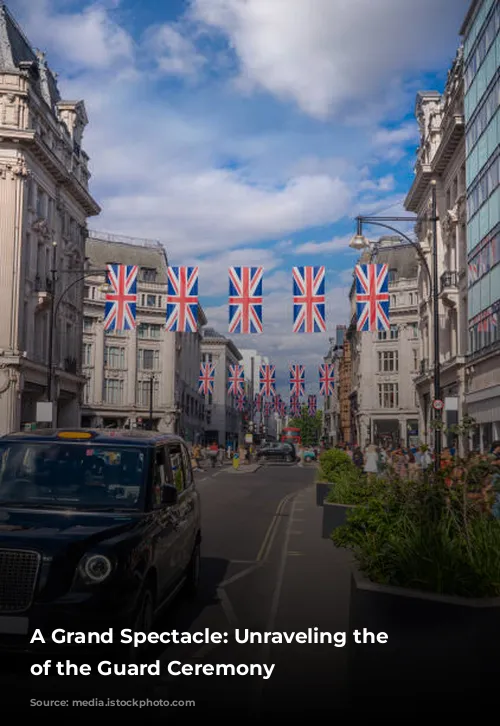Buckingham Palace is a beacon of history and tradition, and its Changing of the Guard ceremony is a spectacle that captivates the hearts of visitors worldwide. This elaborate event isn’t just a visual treat; it’s a deeply rooted tradition that reflects the history of the British monarchy.
Here’s an inside look into the intricate details of the Changing of the Guard ceremony:
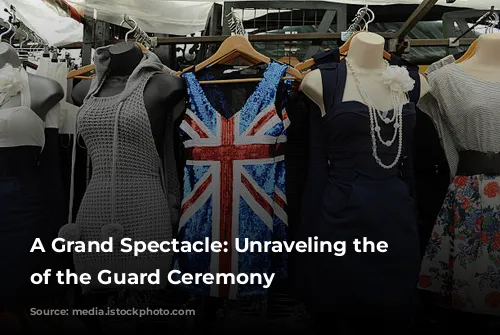
The Grand Performance Begins: A Journey Across Three Locations
The Changing of the Guard, a captivating display of pageantry and precision, involves more than just Buckingham Palace. The ceremony unfolds across three locations, weaving a tapestry of historical grandeur. The journey begins at St. James’s Palace, nestled off The Mall, where the Old Guard gathers in Friary Court at 10:25 AM. The ceremony kicks off with an inspection by the Captain of The King’s Guard.
The scene shifts to The Mall, where the Old Guard, led by a Regimental Band or Corps of Drums, marches towards Buckingham Palace at approximately 10:43 AM. This is where they will meet the New Guard, who are already on duty within the Palace.
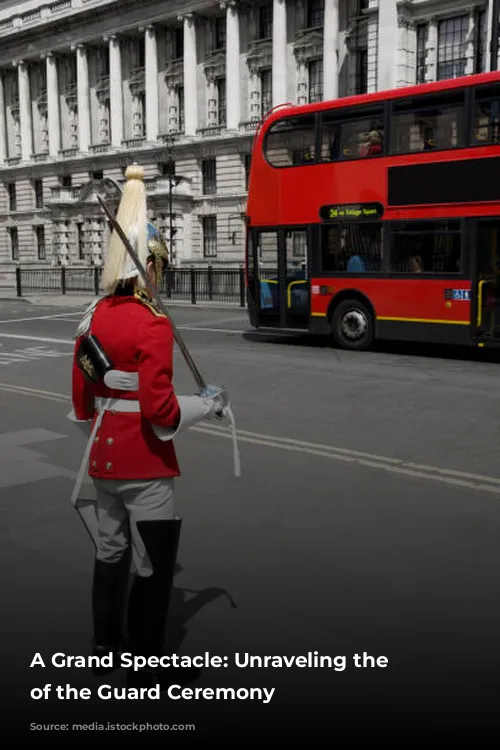
The Arrival of the New Guard: A Symphony of Sound and Precision
As the Old Guard awaits the arrival of the New Guard, the scene at Wellington Barracks, situated at the Buckingham Palace end of Birdcage Walk, unfolds with meticulous precision. Here, the New Guard undergoes a thorough inspection before embarking on their journey to the Palace.
The air is filled with anticipation as the New Guard’s Regimental Colour is brought forward, accompanied by the rhythmic beats of a marching band. The New Guard then steps off from Wellington Barracks, their regimental colors fluttering proudly, at 10:57 AM, led by the band’s melodious tunes.
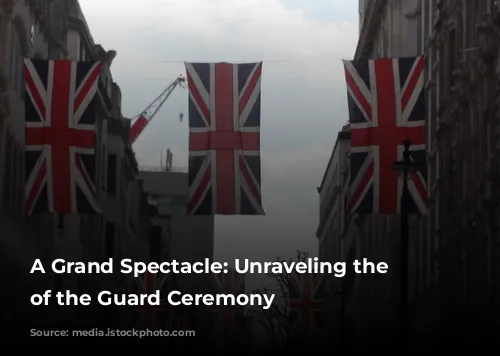
The Symbolic Handover: A Tradition Rooted in History
At precisely 11:00 AM, the New Guard enters the Palace Forecourt through the North Gate. They march past the band and halt in front of the Old Guard. The band then plays the New Guard’s Regimental Slow March as they advance towards the Old Guard.
The ceremony’s heart lies in the symbolic handover of the Palace keys. The Old and New Guards ‘Present Arms’ as the Captains of the Guard ceremoniously exchange the keys. This act signifies the transfer of responsibility for the Palace’s security from the Old Guard to the New Guard, who now become The King’s Guard until they are relieved of duty.
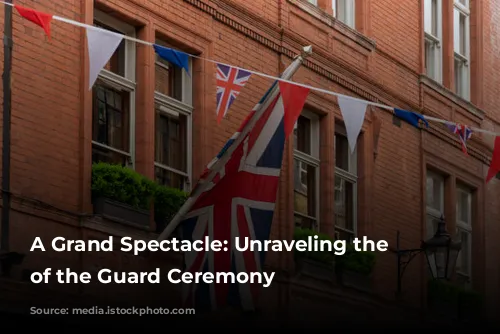
The Guard’s Duties: Beyond the Spectacle
The Changing of the Guard ceremony is more than just a visually captivating event; it signifies a vital duty. The King’s Guard is responsible for the security of the Palace, a duty they fulfill with unwavering precision and dedication.
Here’s a glimpse into the guard’s daily routine:
- The King’s Guard divides into two detachments, one stationed at Buckingham Palace and the other at St. James’s Palace.
- The guards are on duty for either 24 or 48 hours.
- Each guardsman takes turns standing on sentry duty for two hours, followed by a four-hour break.
- The sentries maintain a strict routine, coming to attention every 10 minutes, marching across their post, and returning to standing at ease.
- They are trained to handle any threats or nuisances from the public with professionalism and restraint.
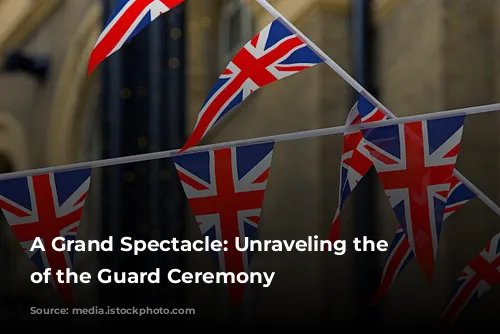
A Legacy of Precision and Security: Preserving Tradition
The Changing of the Guard ceremony stands as a testament to the British Army’s history and traditions. It’s a symphony of precision and pageantry, a visual spectacle that captivates millions of tourists each year. The ceremony represents the unwavering commitment of the King’s Guard to the protection and security of Buckingham Palace.
The next time you’re in London, don’t miss the chance to witness this remarkable tradition. It’s a glimpse into the heart of British history and a celebration of the unwavering spirit of the King’s Guard.


